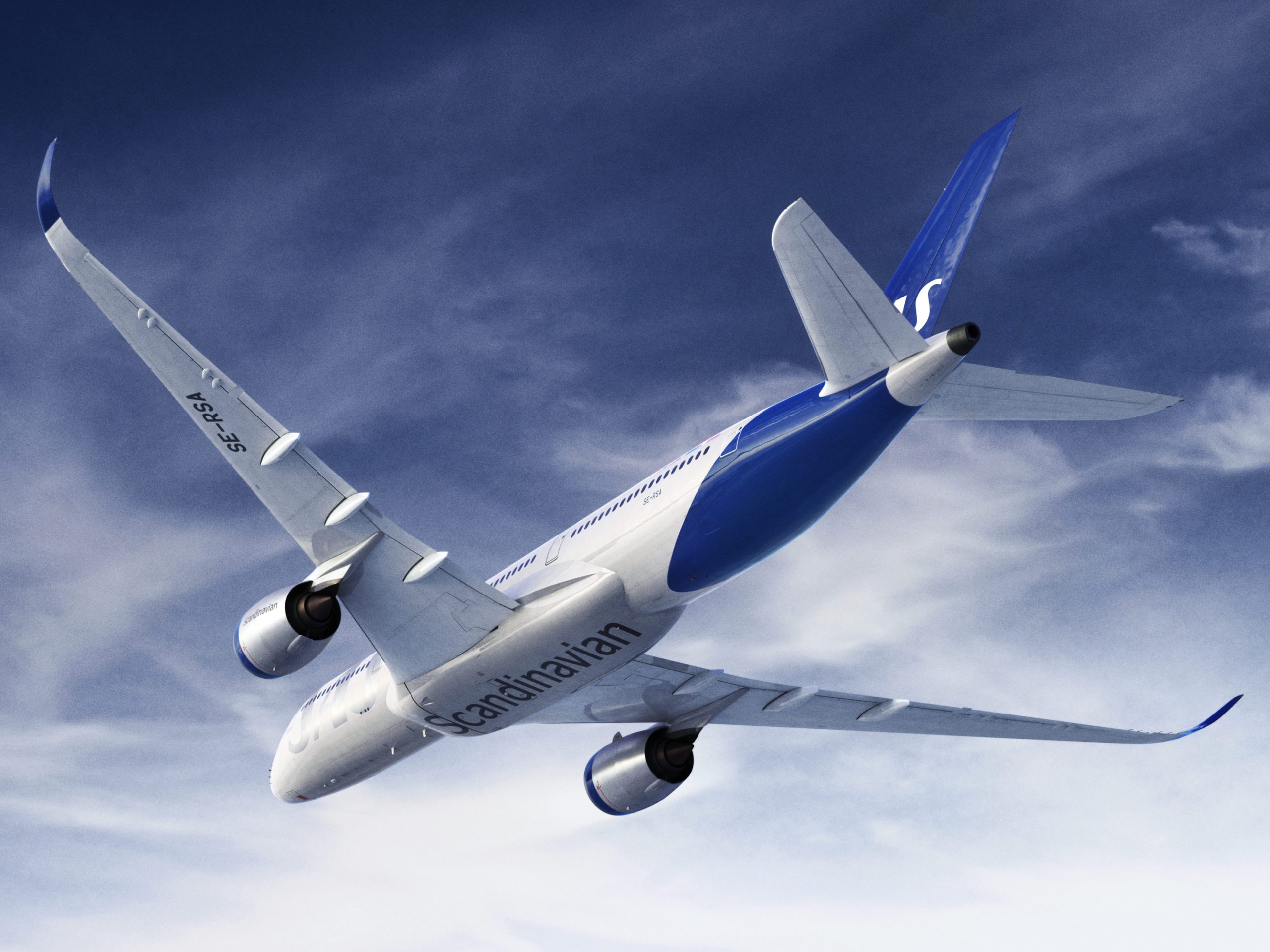
SASA350 scaled
SAS currently is not in a position to make a decision on the renewal of its short- to medium-haul. The Scandinavian airline still has question marks over the reliability of the Airbus A220 and Embraer E190-E2 it is looking at, CEO Rickard Gustafson said at the Q1 investor’s call on February 26.
SAS is busy replacing its medium and long-haul fleet. In Q1 FY19/20, it has taken delivery of 8 more Airbus A320neo’s, bringing the fleet up to 37 aircraft. The airline has 80 neo’s on order to standardize the fleet, which already has resulted in benefits of reduced maintenance costs by SEK 150 million in Q1. Three A321LRs are to join SAS later on. The first was expected in FY21 but Gustafson confirmed this has been delayed until FY22 as Airbus needs time to sort its production out.
The first quarter saw the delivery of the first A350-900s while another has just arrived in Q2 and one more is to come during the year.
SAS CEO Rickard Gustafson. (SAS)
Single-type way to go
As reported here in the Q4 analysis, SAS wants to replace the 58 Boeing 737NGs and 23 Airbus A319/A320ceo’s too, preferably by a single type to extend the benefits to the short and medium-haul fleet as well. “It is very clear that in order to operate an effective airline, you have to take the benefit of operating a single-type operation”, says Gustafson. “The best chance for us to continue to grow and develop and secure the jobs with our large jet operation is to make sure that we maximize the value and benefits of our single-type fleet. But we also recognize that we do need to have access to the regions and provide feeder traffic.”
SAS staff and unions have been worried that the management wants to out-source this feeder traffic to a new entity that might be placed in a country with lower wages, just as it has done with the establishment of SAS Ireland.
Gustafson was clear that this isn’t the way the board is going: “We acknowledge that these (feeder) aircraft need to be based in our home region in order to be effectively scheduled. This means that we want to employ Scandinavian employees and on terms that are tailored for this kind of regional production. That’s how we want to safeguard Scandinavian jobs and hopefully grow all parts of our business.”
For this, Gustafson needs support from staff and unions. He was happy to announce that Danish union FPU is supporting the creation of this new regional platform, but he needs other unions to follow suit before it can become operational. The CEO hopes to announce progress or preferably an agreement later this year.
Aircraft availability more tricky
At the same time, SAS needs to make a decision on how to equip this platform. As Gustafson says: “As it comes to aircraft availability, it is more tricky. Not just the availability of the aircraft but also the reliability. Those technologies that are available – the Airbus A220 and the Embraer-option – both still have engine issues to solve before we feel they can operate with the robustness we anticipate and expect.”
P&W PW-1700 on a Wideroe Embraer E190-E2. (Wideroe)
Gustafson is referring here to recent issues with the Pratt & Whitney PW-1500 and PW-1700/-1900 engines on the A220 and E190-E2/E195-E2. Both engine types are under scrutiny from the regulators after incidents on the A220, which include a brand-new airBaltic aircraft just two weeks ago.
SAS wants to have guarantees that both aircraft models can operate reliably in the often rugged northern polar climate. It will carefully have monitored the performance of Norway’s Wideroe E190-E2 operations since 2018.
There isn’t much time for SAS to decide, as Gustafson concedes: “I know we are on a very tight time schedule to source these aircraft but we are fairly confident that there are opportunities and solutions for us to grab.” SAS preferably wished the new aircraft to be available in FY22 or FY23.
Lower Q1 result
The Scandinavian airline reported an income before items affecting comparability of SEK -1.078 billion, down from -724 million in Q1 last year. This was caused by negative currency effects, higher staff costs, and accounting costs resulting from IFRS16 standards. Revenues were SEK 9.707 billion, 127 million higher, of which 107 million is attributable to higher passenger revenues. Yields were down 39 million.
Passenger numbers to Scandinavia were 3.8 percent down to 21.6 million, yet SAS increased market share by 1.5 percent to 6.3 million passengers. Domestic traffic was -11 percent. SAS is carefully watching the effect of an additional 20 percent air passenger duty, which according to Gustafson aren’t helping the airline industry whatsoever to invest in more sustainability. SAS earned SEK 180 million in Q1 on efficiency out of the 600 million targeted for the year.
While SAS has only limited exposure to China and as such expects only a SEK 200 million drop in the net result coming from Covid-19 in the Asia-Pacific region, things can change for the worse as the virus spreads around Europe. This makes 2020 difficult to predict.
Views: 13




